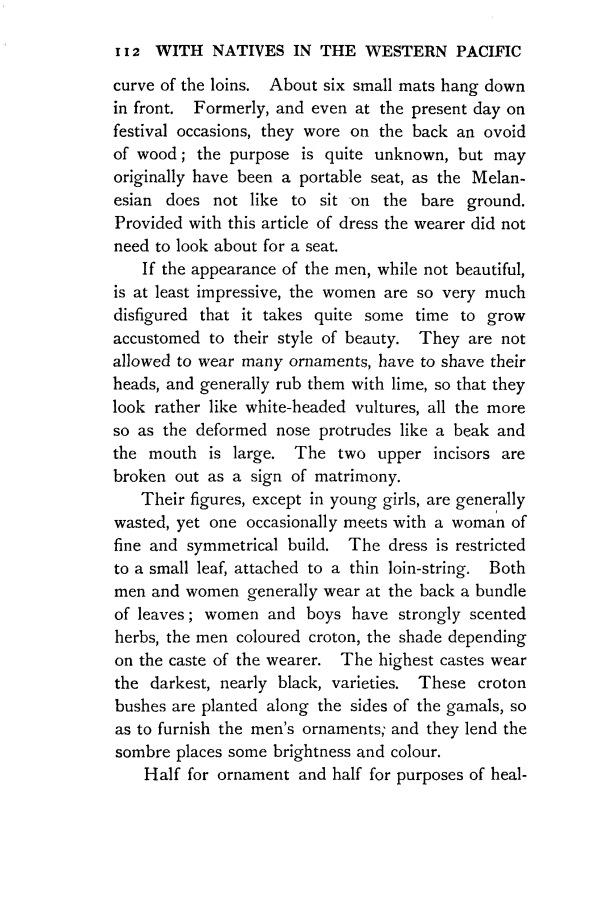|
|  [Note: this transcription was produced by an automatic OCR engine]
112 WITH NATIVES IN THE WESTERN PACIFIC
curve of the loins. About six small mats hang down
in front. Formerly, and even at the present day on
festival occasions, they wore on the back an ovoid
of wood; the purpose is quite unknown, but may
originally have been a portable seat, as the Melan-
esian does not like to sit ’on the bare ground.
Provided with this article of dress the wearer did not
need to look about for a seat.
If the appearance of the men, while not beautiful,
is at least impressive, the women are so very much
disfigured that it takes quite some time to grow
accustomed to their style of beauty. They are not
allowed to wear many ornaments, have to shave their
heads, and generally rub them with lime, so that they
look rather like white—headed vultures, all the more
so as the deformed nose protrudes like a beak and
the mouth is large. The two upper incisors are
broken out as a sign of matrimony.
Their figures, except in young girls, are generally
wasted, yet one occasionally meets with a woman of
fine and symmetrical build. The dress is restricted
to a small leaf, attached to a thin loin-string. Both
men and women generally wear at the back a bundle
of leaves; women and boys have strongly scented
herbs, the men coloured croton, the shade depending
on the caste of the wearer. The highest castes wear
the darkest, nearly black, varieties. These croton
bushes are planted along the sides of the gamals, so
as to furnish the men’s ornaments; and they lend the
sombre places some brightness and colour.
Half for ornament and half for purposes of heal-
|